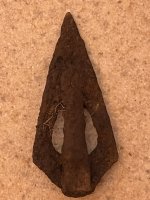Ol' Kentuck
Hero Member
- Jun 12, 2018
- 767
- 1,310
- Primary Interest:
- Other
I was going with the History channels version of the robbery.....https://www.history.com/this-day-in-history/minnesotans-nearly-wipeout-the-james-younger-gang. I am open to anything you have, as I have my own doubts that they were there too. They had some help that would not have let them fail like that if you ask me, and it was out of their range. I believe their are many robberies that they say they did, that may have been somone else saying they were them or the people claimed it was them to hype up the excitement of the robbery. I am inclined to believe like you and Ol Kentuck that there were too many Jesse James back then in too many places. I have been to Minnisota and back in a car when we took Dad to the Mayo clinic. It is hard to imagine that they woud have made the trip on horseback with a wounded man, and they had to go another 60 miles south than we did.
L.C.
Well said, LC.
Ye may not rekegnize tha differnce in a cow an a steer, but ye got the right of this un.











